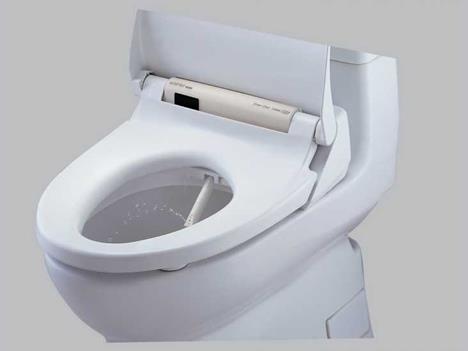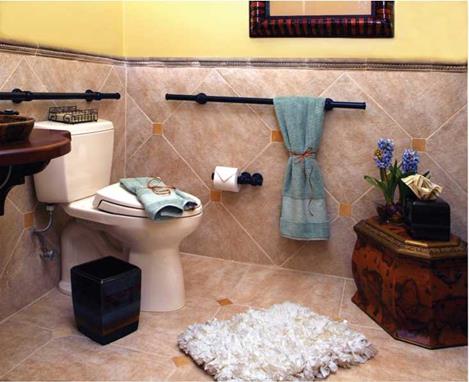Grab bars should be planned at the toilet area. Grab bars can be used to assist with balance and limited strength when sitting down and standing up; and aid in transferring onto the toilet from a wheelchair. Attention should be given to visual cueing in the selection of grab bars. For example, white grab bars on a white wall can be difficult to see.
Like the shower, the walls around the toilet should be reinforced so grab bar installations can be customized for the user. There are common practices for locations for grab bars (see Figure 8.58), yet it is best to place the support where it will work best for the client.
Access Standards recommend grab bars should be provided on the rear wall and on the side wall that is closest to the toilet. The side-wall grab bar should be at least 42 inches (1067 mm) long and
|
|
|


located between 12 inches and 54 inches (305 mm and 1372 mm) from the rear wall. The rear grab bar should be at least 24 inches (610 mm) long, centered on the toilet. Where space permits, the bar should be at least 36 inches (914 mm) long, with the additional length provided on the transfer side of the toilet (see Figure 8.59).
If the side wall is not long enough for the 42-inch (1067 mm) long grab bar, consider a fold-down grab bar off the back wall or a seat with integrated bars or hand-holds (see Figure 8.60).



